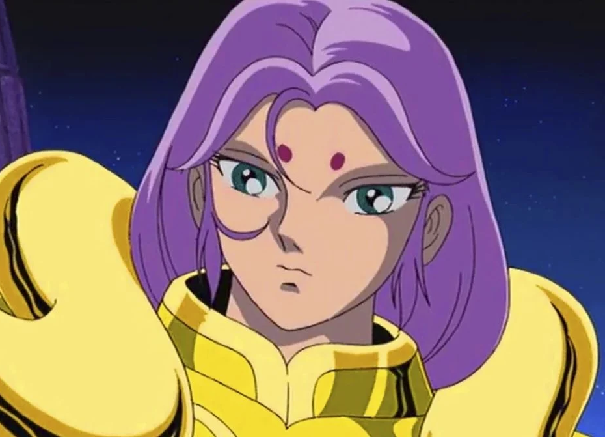“Saint Seiya” (also known as “Knights of the Zodiac”) is a Japanese anime and manga series created by Masami Kurumada.
While Saint Seiya is primarily known for its connections to Greek mythology and various cultures, it also incorporates elements of alchemy, particularly in its depiction of the Gold Saints and their Cloths.
1. Gold Saints as Alchemists
In the context of the “Saint Seiya” universe, the Gold Saints emerge as the vanguards akin to superhuman figures within the fraternity of Saints.
These individuals embody an unparalleled degree of skill and devotion, marking the zenith of excellence within their realm. The essence of their ethos revolves around principles of integrity, potency, and the guardianship of moral rectitude and societal order.
Visualize a scenario where these Gold Saints don elaborate attire known as Gold Cloths—attires akin to iconic superhero ensembles.
Each Cloth carries an intricate affiliation with a specific zodiac sign, attuned to celestial narratives. As they don these resplendent Gold Cloths, it’s akin to them becoming conduits linking with the very fabric of the universe.
This affiliation empowers them with a surge of energy, granting them preeminent prowess within the realm of power. Check the refferences to hinduism in Saint Seiya here.
Several of these Gold Saints wield mastery over fundamental components of existence, from rudimentary matter to dynamic energy, and even the quintessence of life itself.
Their ability to harness these diverse forces harks to the transformative and ennobling principles inherent in alchemical thought.
Analogous to alchemists who aspire to transmute the mundane into the extraordinary, these Gold Saints partake in a process of elevating the commonplace into the realm of the extraordinary.
2. Mu: Cloth Restoration and Evolution
Mu of Aries possesses a unique ability in the “Saint Seiya” series to restore and upgrade the Cloths worn by the Saints. This power is reminiscent of alchemical principles, where transformation and refinement are central.
Just as alchemists sought to transmute base elements into noble substances, Mu’s skill involves elevating the Cloths to their optimal state.
Mu’s connection to alchemy is evident in his role as a “Cloth repairman,” akin to an alchemist refining raw materials. He approaches Cloths with a meticulous precision, akin to an alchemist’s careful handling of substances.
The process of restoring and upgrading Cloths aligns with alchemy’s aim of transmutation and elevation. It’s as if Mu is turning regular Cloths into something extraordinary through his mastery.
Moreover, Mu’s actions echo alchemical themes of rejuvenation and revitalization. By restoring and enhancing Cloths, he contributes to their evolution, mirroring the alchemical journey from base to refined. Check all the astrology references in Saint Seiya.
3. Dohko: Exilir of Life
Dohko’s unique ability of not aging in the context of “Saint Seiya” exhibits a fascinating resonance with the principles of alchemy.
Alchemy, beyond its material transmutations, encompasses a profound search for immortality and spiritual evolution—a theme that intersects with Dohko’s exceptional attribute.
In alchemy, the quest for the Philosopher’s Stone and the Elixir of Life signifies the pursuit of eternal youth and transcending the limitations of mortal existence.
Similarly, Dohko’s timeless state aligns with this aspiration, portraying an embodiment of alchemical yearnings for everlasting vitality.
Dohko’s ability alludes to the alchemical pursuit of refining and transmuting the self. Just as alchemy seeks to transform base elements into higher forms, Dohko’s unaging nature embodies a transformation that transcends the limitations of aging.
This allegory of self-purification and elevation, central to alchemy, finds expression through Dohko’s undying presence. Read about the christian references in the show.
Furthermore, Dohko’s attribute intersects with alchemy’s spiritual dimension. Alchemy aims to awaken hidden potential, attain enlightenment, and achieve spiritual ascension. Dohko’s immortality mirrors this aspiration, illustrating an enduring journey towards an elevated state of being.
3. Cosmos
In the realm of “Saint Seiya,” a captivating concept known as “Cosmo” emerges—an energy that, while not exactly traditional alchemy, possesses intriguing parallels.
This cosmic force serves as a wellspring of spiritual energy, harnessed by characters to achieve remarkable feats. Although not a direct alchemical element, “Cosmo” resonates with the very essence of spiritual and transformative themes frequently entwined with alchemy.
“Cosmo” represents an energy that originates deep within each character, tapping into their inner strength, determination, and emotions.
It’s as if this energy reflects the raw potential locked within alchemical substances—an inherent capacity for change and evolution.
When characters unleash their “Cosmo,” they channel this force to achieve feats that surpass mere physical limits, resonating with the alchemical goal of transcending the ordinary.
The parallel becomes more apparent when we consider the spiritual and transformative aspects of both “Cosmo” and alchemy.
Just as alchemy seeks to refine and elevate substances, “Cosmo” embodies the idea of elevating one’s own being through spiritual growth. This mirrors the alchemical journey, where the refining of materials mirrors the refining of the self.
The “Cosmo” serves as a conduit for introspection and self-discovery, inviting characters to tap into their innermost potential. The show also has a lot of references do Buddhism, check here.
It’s not simply a tool for battles; it’s a reflection of the characters’ connection to their own essence, much like alchemy’s pursuit of understanding the essence of substances.
5. The Cloth of Lapis Lazuli
In the expansive universe of “Saint Seiya,” there exists a character named Agrios, who stands as one of the formidable giants within the series.
What sets him apart is his choice of attire—the Cloth of Lapis Lazuli. This cloth, while seemingly a part of the character’s aesthetic, carries a profound significance deeply rooted in the world of alchemy.
“Lapis Lazuli,” a vivid blue gemstone often associated with spiritual and mystical properties, holds a special place in alchemical symbolism. In alchemy, every element holds layers of meaning, often both material and metaphysical
Lapis Lazuli carries a rich heritage as a symbol of wisdom, inner truth, and spiritual enlightenment. It’s a gemstone revered for its deep blue color, reminiscent of the vast expanse of the sky or the boundless depths of the ocean.
In the context of Agrios and his Cloth, the presence of “Lapis Lazuli” alludes to layers of significance beyond mere aesthetics.
Much like the alchemical quest to transmute the ordinary into the extraordinary, Agrios, clad in the Cloth of Lapis Lazuli, embodies the aspiration to elevate his existence beyond the mundane.
He becomes a visual metaphor for the pursuit of higher truths and a deeper understanding of the cosmos. Check the references in nord mythlogy to in Saint Seiya.
4. Transmutation and Transformation
Alchemy, often associated with turning ordinary metals into gold using the “Philosopher’s Stone,” is like a secret blend of philosophy and magic.
And in the world of “Saint Seiya,” the idea of change is a big deal. It’s not just about the cool stuff the Gold Saints can do, but also about their own personal struggles and growth.
They’re kind of like real-life alchemists, going through challenges that help them become better versions of themselves.
Just like how alchemy aims to turn something basic into something precious, the Gold Saints go through a journey that’s kind of like that.
They face tough situations, both physically and mentally, that help them become stronger and wiser. It’s almost like they’re being refined, just like how alchemists work to purify substances.
And you know what’s cool? The whole idea of transformation doesn’t stop at their abilities. It’s also about their characters.
As the story goes on, we get to see different sides of them, their strengths, and their flaws. It’s like the Gold Saints are going through their own version of turning lead into gold, becoming better people in the process.
So, “Saint Seiya” isn’t just about epic battles and cool powers. It’s also about this journey of change and growth, where the Gold Saints and their struggles mirror the idea of alchemy—turning something ordinary into something extraordinary. Read about greek mythology in Saint Seiya.

